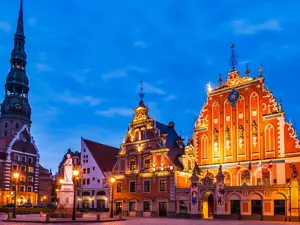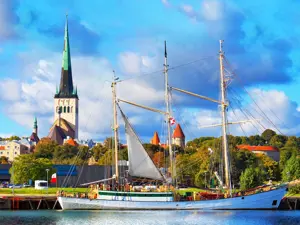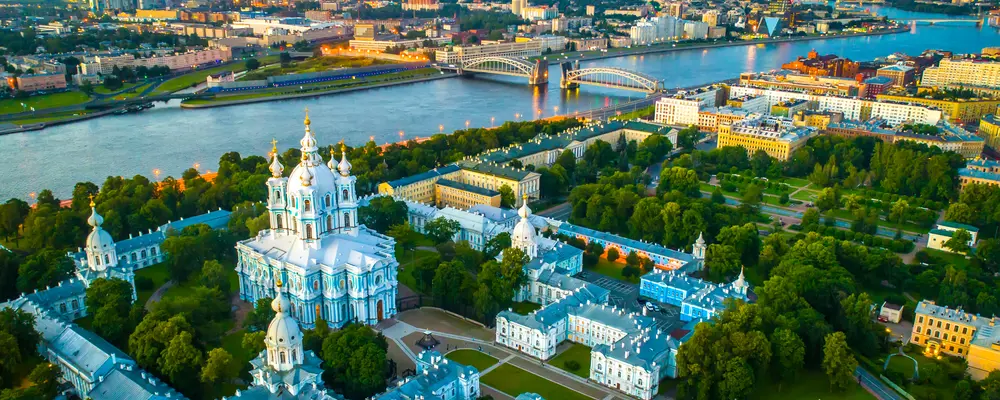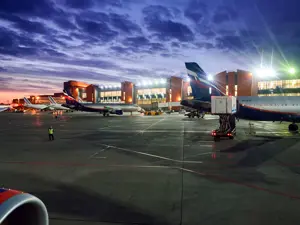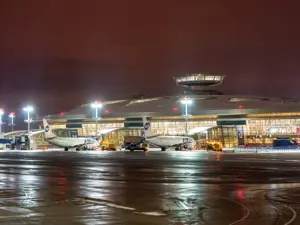Moscow boasts an ancient history and carefully preserves the heritage of the past.
Moscow is an attractive and opulent city, a capital that concentrates nine centuries of history, reflected in its churches, squares and buildings. The Kremlin is part of the central architectural ensemble together with Red Square, St. Basil’s Cathedral and the modern and futuristic “Okhotny Ryad” shopping centre with its immense glass dome.
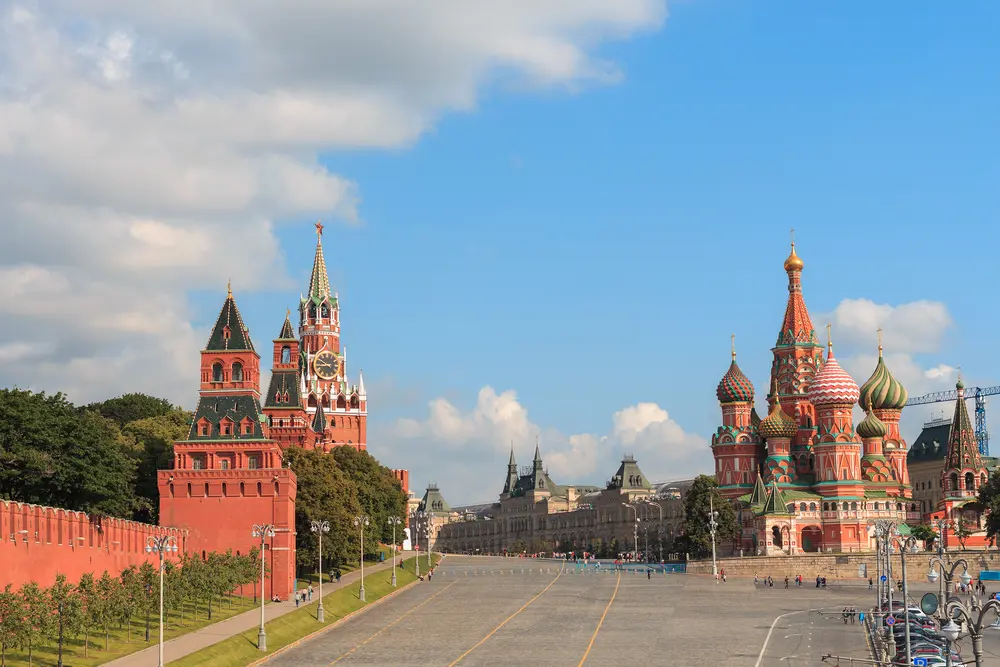
Each century left its mark on the Kremlin, and the large number of buildings it is made up of have contributed to creating its grandeur. These buildings include the large palace, cathedrals (including the wonderful Cathedral of the Annunciation completed in 1439), towers and belfries, the most famous of which is the Ivan the Great, with a height of 81 metres.
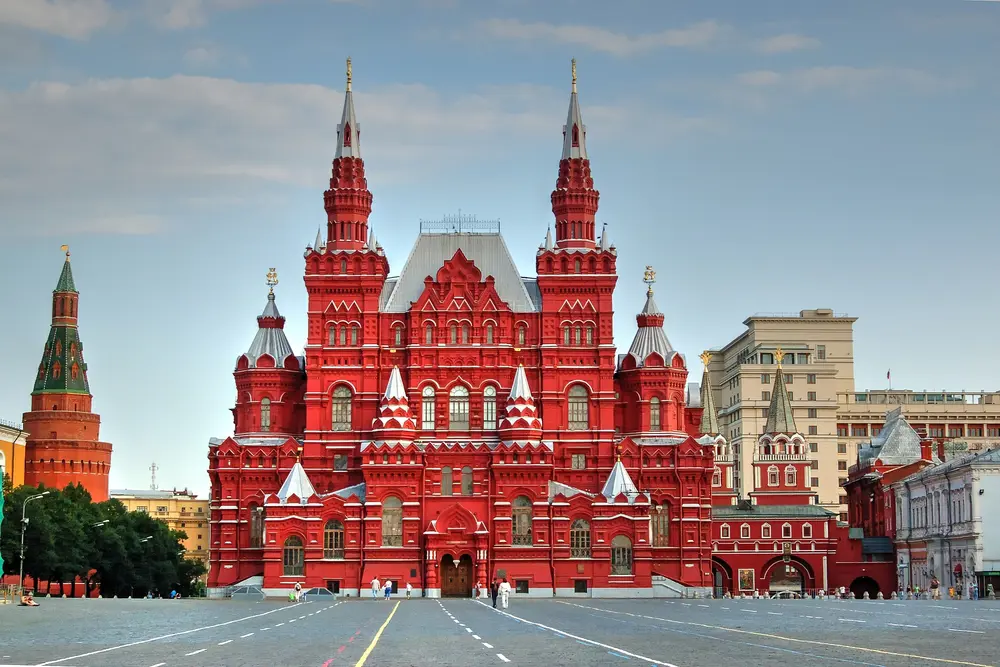
The History Museum
The Red Square
Red Square lies outside the east wall of the Kremlin and is indissolubly linked to its architectural ensemble. It is bound to the south by the Cathedral of the Intercession (Pokrovski), to the north by the building of the History Museum and Voskresensky vorota (Resurrection Gate), and to the east by the very long façade of the Gum department store.
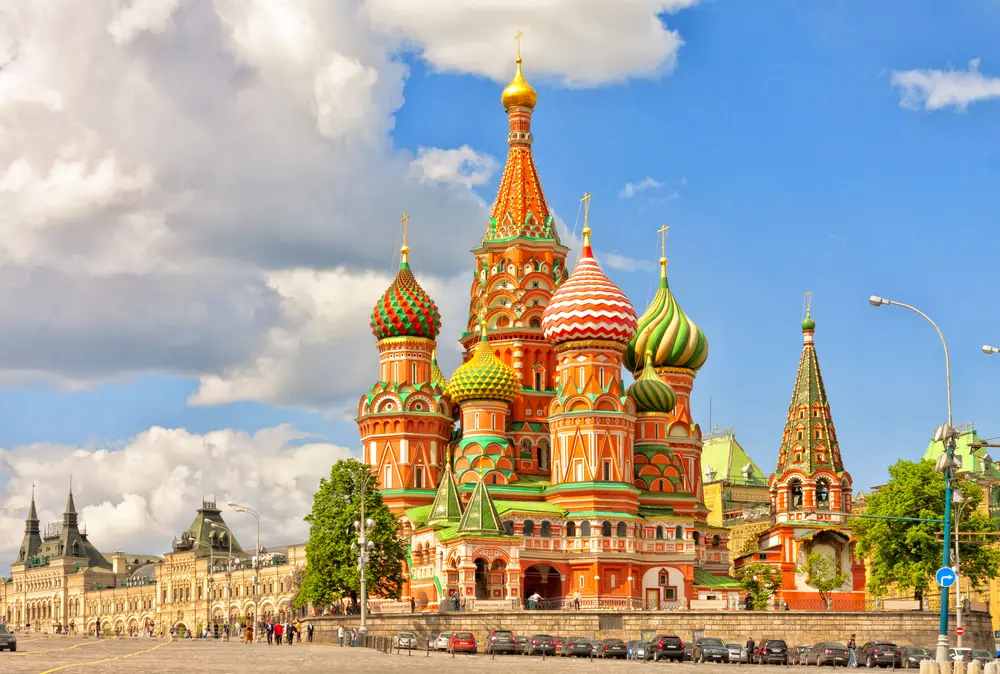
The Pokrovski Cathedral
The Pokrovski Cathedral
Pokrovski Cathedral, also known as the Church of St. Basil the Blessed, consists of eight chapels on a single foundation, placed symmetrically round the ninth central chapel crowned with a tent-like roof. Near Red Square, part of the so-called Chinatown, which was originally the district of craftsmen and merchants and has today been radically transformed, preserves buildings and churches of great interest and some very beautiful corners.
Along Kuibyshev street, on the south side of the Gum department store, is the imposing Merchant Court (Gostiny Dvor) in Neoclassical style, which was designed by the Bergamask architect Quarenghi in 1800. The church of the Epiphany Monastery lies further ahead, in Kujbysevskij Proezd. This church, erected at the end of the seventeenth century, is an excellent example of Russian Baroque.
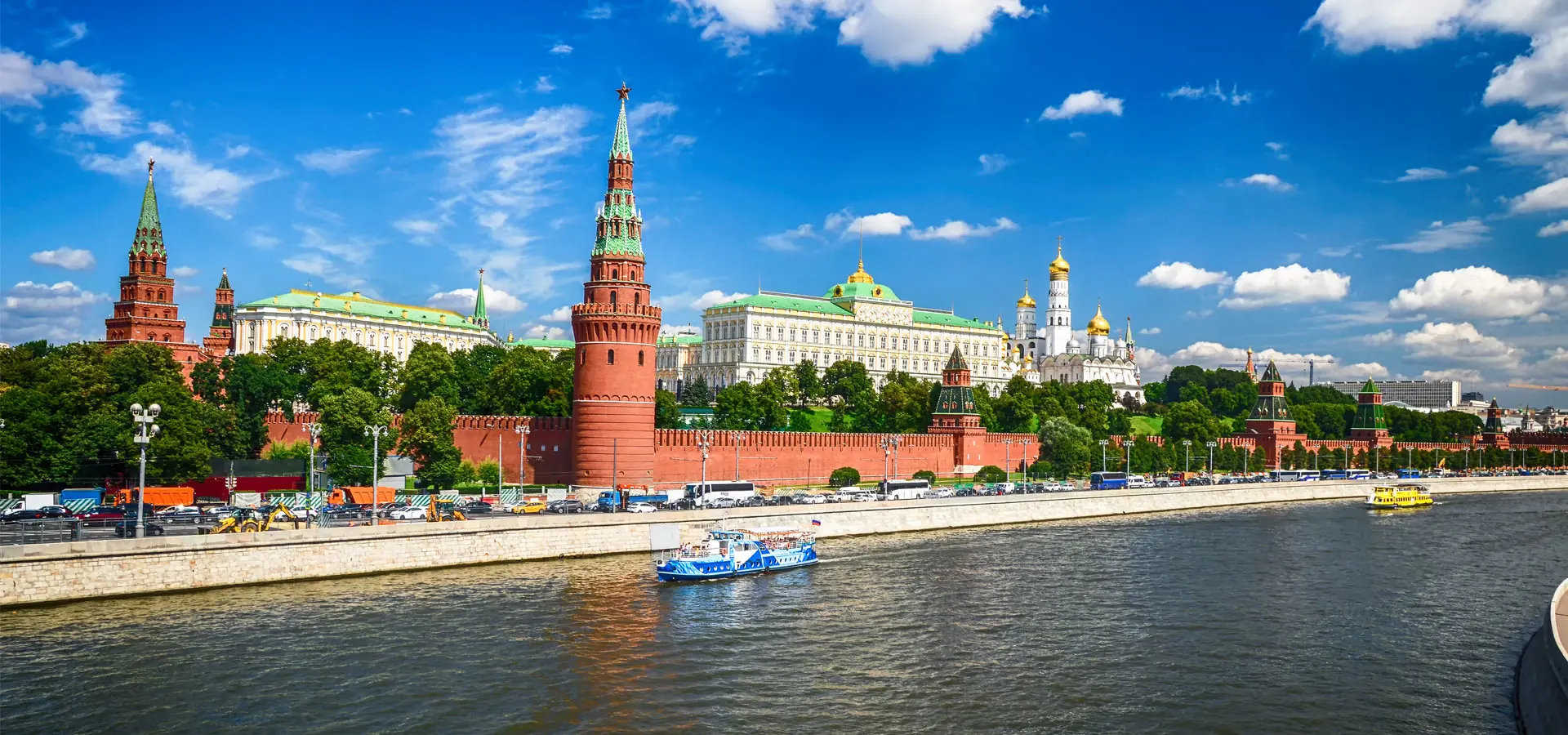
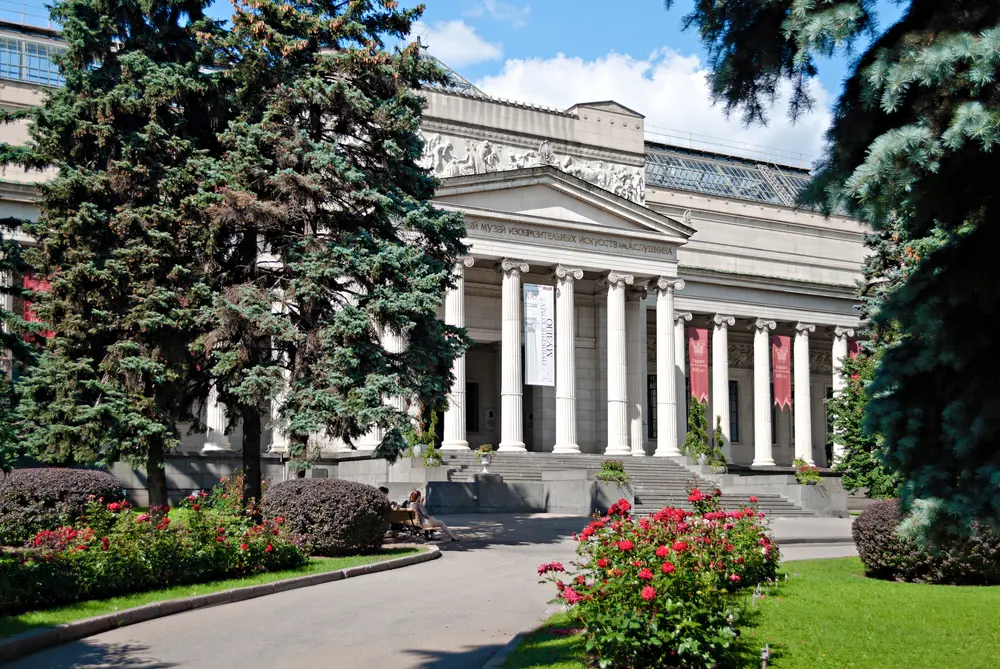
Pushkin Museum
The Museums
New Square (Novaya ploshchad) lies ahead, on which stand the Polytechnic Museum, housed in a building dating back to 1876 designed by the Italian Monighetti, and the Museum of History of Moscow, housed in the former Church of St. John the Theologian, which was built in neoclassical style in 1825.
Also not to be missed is the Pushkin Museum with collections of European art.
Beyond New Street, in Bogdan-Khmelnitsky (Maroseika) Street, is the neoclassical Church of Saints Cosmas and Damian, designed by the architect Kazakov, a favourite of Empress Catherine the Great. The Church of the Archangel Gabriel, known also as the Menshikov Tower and one of the most beautiful Baroque churches in the city, can be found on Telegraph Street (Telegrafny pereulok).
Another place worth visiting is Razina Street (Varvaka), which is abundant with churches and historical buildings dating back to the sixteenth and seventeenth centuries, and the Palace of the Romanov Boyars, a typical example of a noble Russian residence and the house where Mikhail Fedorovich, the head of the family, lived.
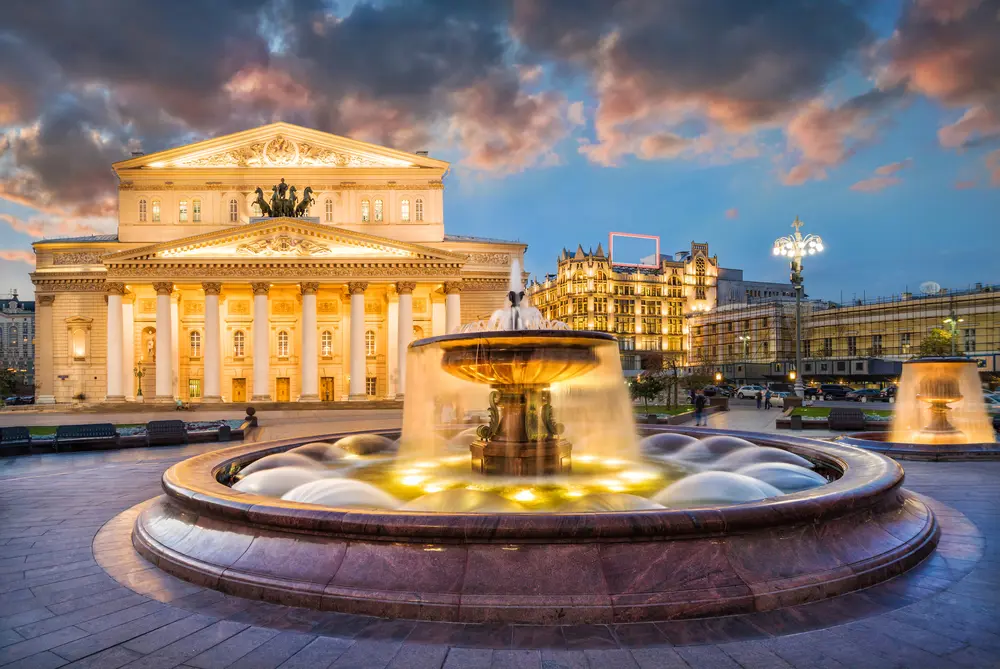
The Bolshoy Theatre
The Theatres
Okhotny Ryad Street embraces the centre of the city with a semicircle that crosses Teatralnaya Square on which the Bolshoi and Malytheatres stand. The Bolshoi is one of the most important opera and ballet theatres in the world and a performance here is certainly worth seeing.
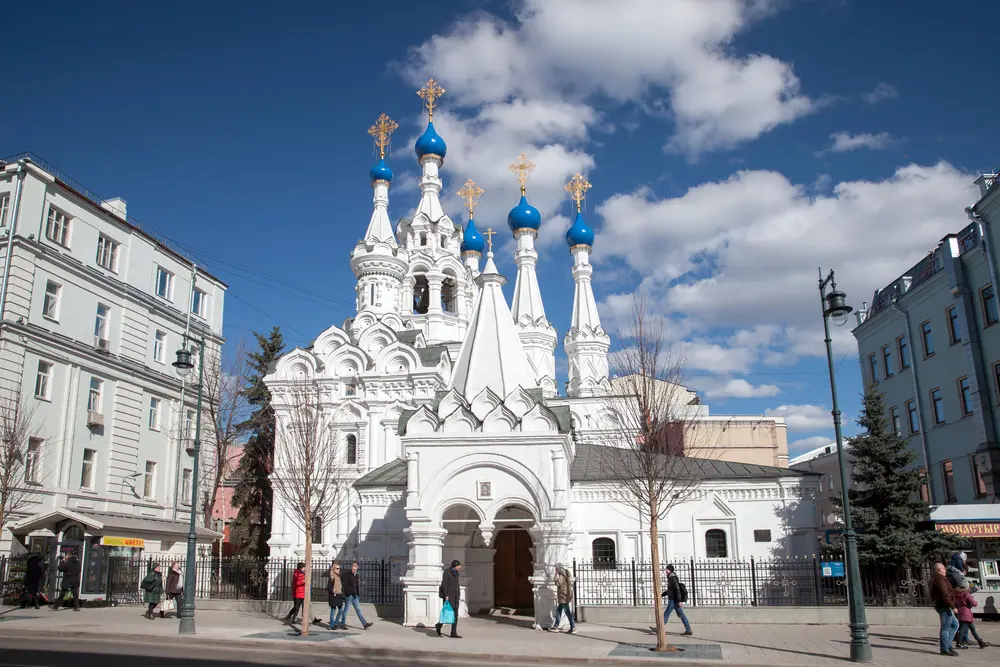
Church of the Nativity at Putinki
Church of the Nativity at Putinki
A stroll along the very picturesque side alleys to Herzen Street (Bolshaya Nikitskaya) towards the Arbat district and Tverskaya Street, among aristocratic houses, is an opportunity to admire the architecture and enjoy a cultural pilgrimage since many famous writers lived in this area. The Church of the Nativity at Putinki (XVII century), in Chekhov Street (Malaya Dmitrovka) is unusual because it combines elements typical of both civil and holy buildings.
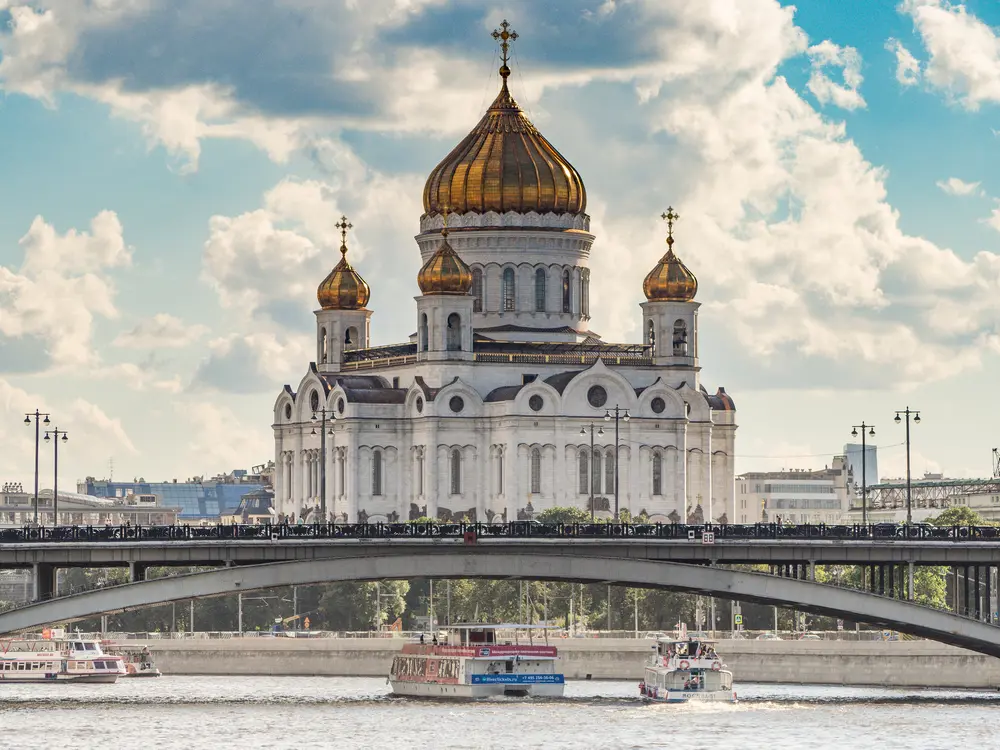
Basilica of Our Saviour
Basilica of Our Saviour
The Arbat district exudes an atmosphere of old Russia and is abundant with souvenir and antique shops. Near the metro stop of Kropotkinskaya, the districts preserve reminders of their noble past: the Pushkin and Tolstoy Museums and the great Basilica of Our Saviour.
The Convent of Maidens (Novodevichy), an architectural complex second only to the Kremlin, houses the tomb of many Russian poets and musicians including Chekhov, Tolstoy and Gogol. The principal church is the Cathedral of Our Lady of Smolensk. Those interested in Russian art should not miss a visit to the very important Tretyakov Gallery (metro Novokusnezkaya Tretyakovskaya), which houses very beautiful icons dating from the twelfth to the seventeenth centuries.
Moscow is also a modern and vibrating megapolis.
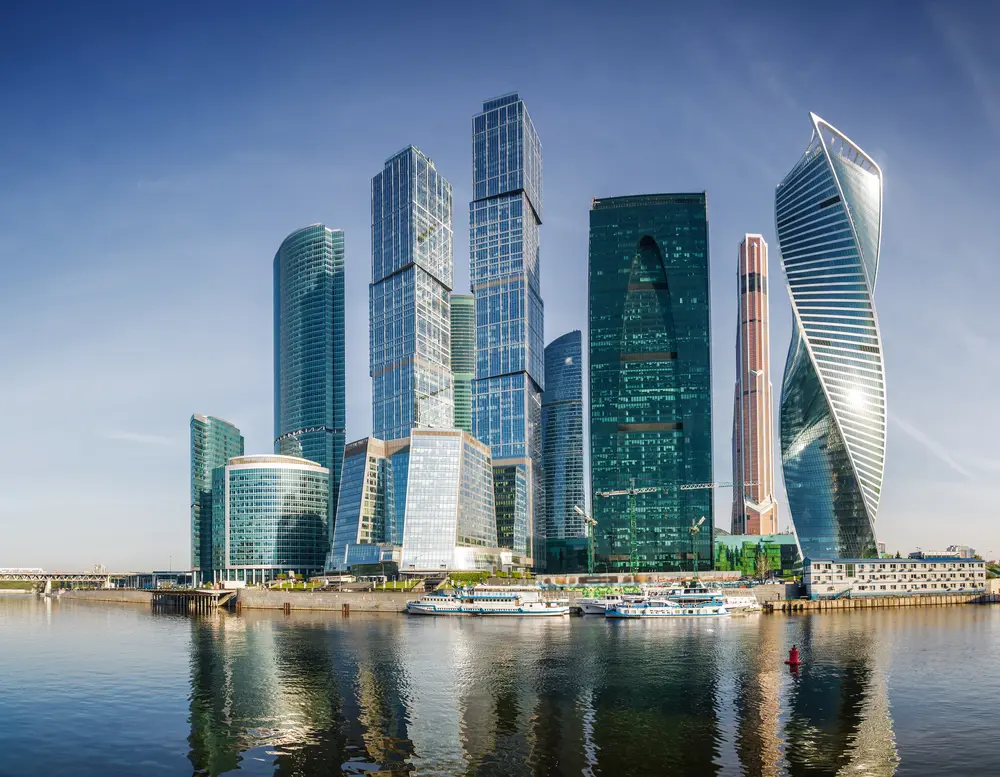
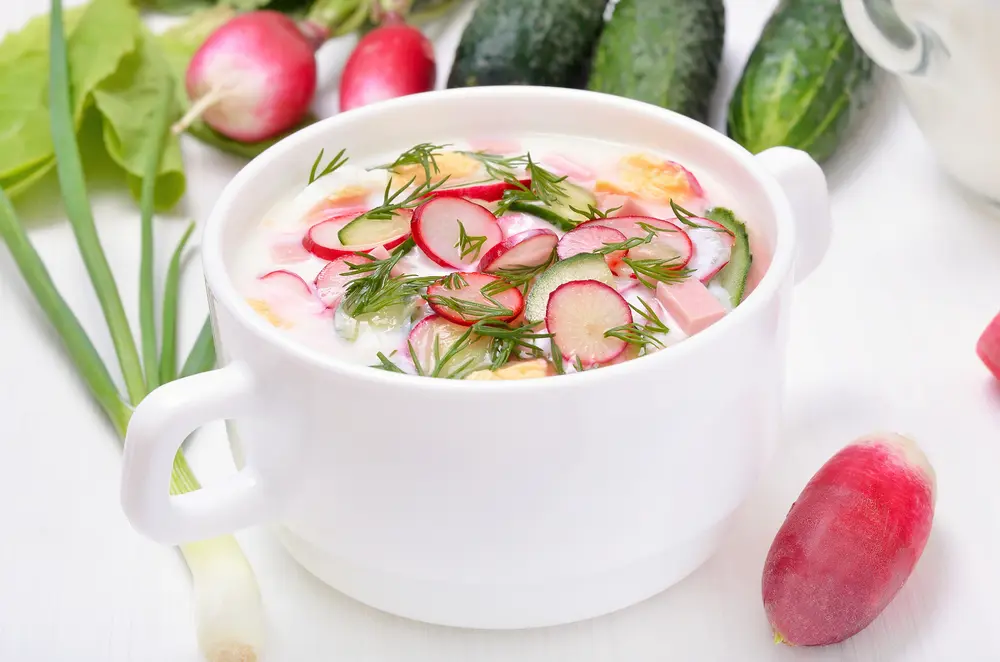
Okroshka soup
The dishes
The Russian culinary traditions influenced by Turkish cuisine and the Caucasus are explained not only by history, but also by the climate.
To the north, a lot of meat and fish is the basis of the dishes. To the south the Russians cook bird meat, vegetable dishes and then fruit and wine. Vegetables and fruit ripen very late, so all kinds of pickles are common in Russia. Soups are generally served with sour cream as a first course.
To taste the okroshka soup with vegetables and smoked meat, the Shci soup with cabbage and the borsch with a beetroot.
On the Pacific side a fish cuisine has developed and the Kamchatka crab is perhaps the most famous of all Russian seafood. The trepang (sea cucumber) and the wild oysters of Sakhalin are also widespread.
Gingerbread is famous throughout the country in different shapes and sizes.
To the north, a lot of meat and fish is the basis of the dishes. To the south the Russians cook bird meat, vegetable dishes and then fruit and wine. Vegetables and fruit ripen very late, so all kinds of pickles are common in Russia. Soups are generally served with sour cream as a first course.
To taste the okroshka soup with vegetables and smoked meat, the Shci soup with cabbage and the borsch with a beetroot.
On the Pacific side a fish cuisine has developed and the Kamchatka crab is perhaps the most famous of all Russian seafood. The trepang (sea cucumber) and the wild oysters of Sakhalin are also widespread.
Gingerbread is famous throughout the country in different shapes and sizes.
The Moscow Metro
As well as being one of the most organized and efficient urban networks in the world, the Moscow Metro has stations that are set up and decorated like miniature buildings with sculptures, lampposts, chandeliers and spectacular mosaics. Construction work began in 1931 and today has 12 lines and 214 stations carrying around 9 million passengers a day.
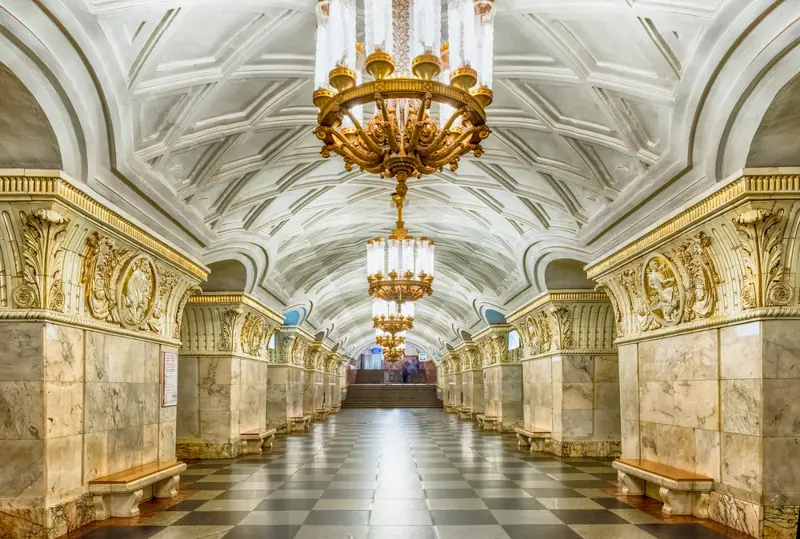
Prospekt Mira Station
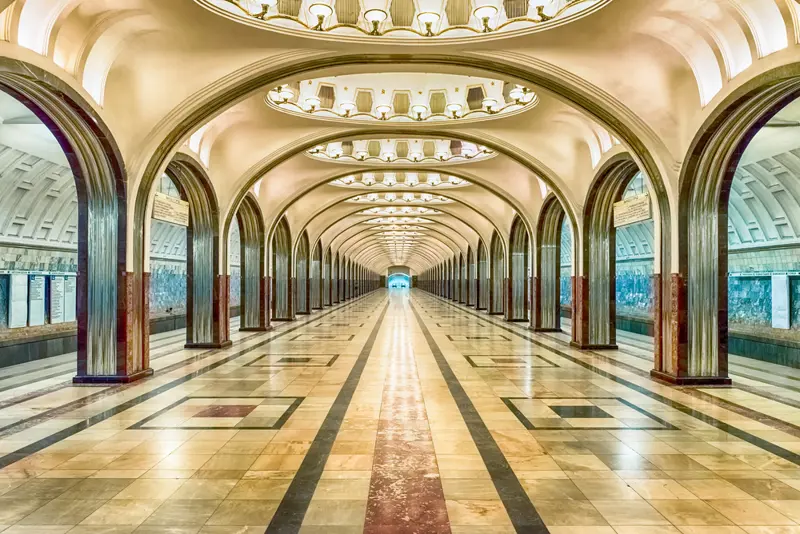
Mayakovskaya Station
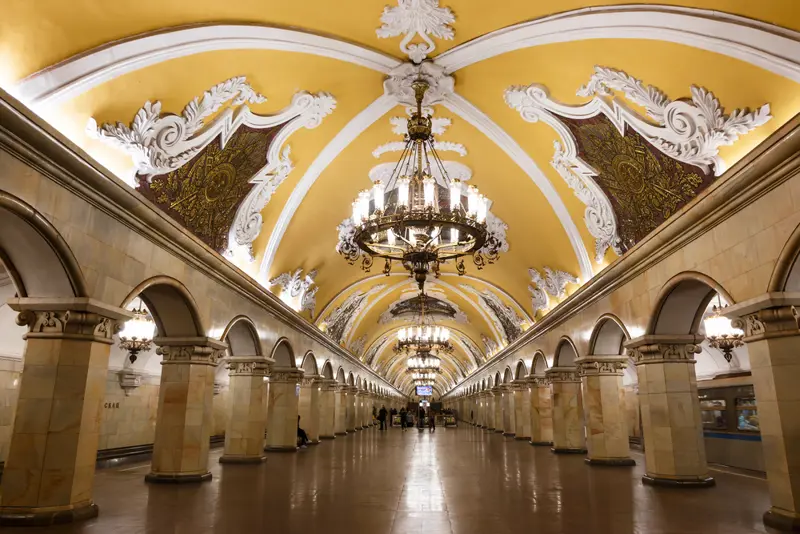
Komsomolskaya Station
Where to sleep in Moscow
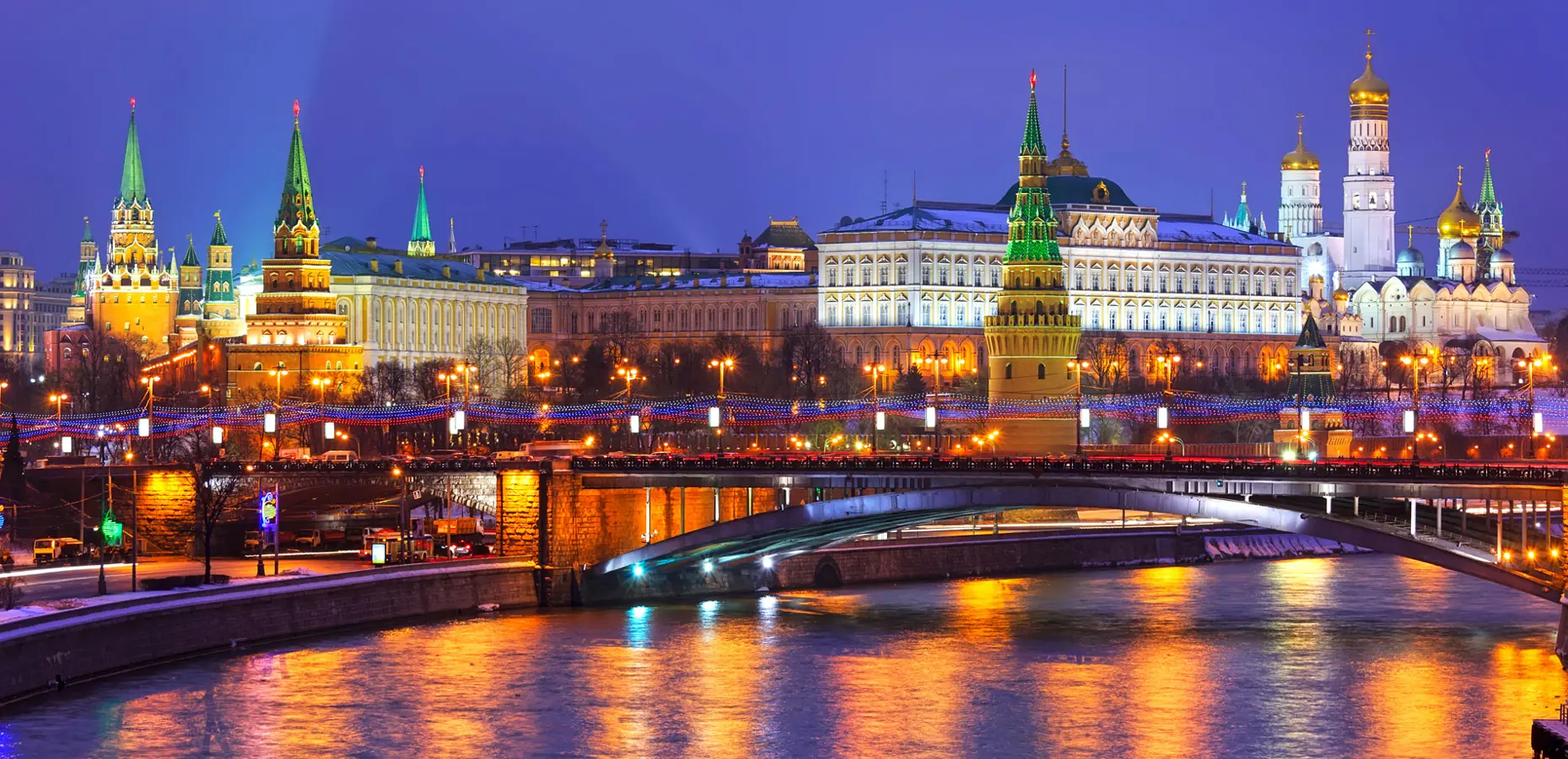
Moscow is a welcoming city and offers different possibilities for accommodation.
To find the ideal hotel and the best offers you can do a search for the stars but also for districts or landmarks.
DISTRICTS
Hotels in the districts
LANDMARKS
Hotels in tourist areas
Text by Luca Lembi
Photos: Sisterscom.com, Shutterstock
Photos: Sisterscom.com, Shutterstock
Video: Federal Agency for Tourism; adapter.su
Copyright © Sisterscom.com
Copyright © Sisterscom.com
Published on Avion Tourism N68; N3/2018.
Update by Nicolò Villa.
WHERE TO GO
Monuments
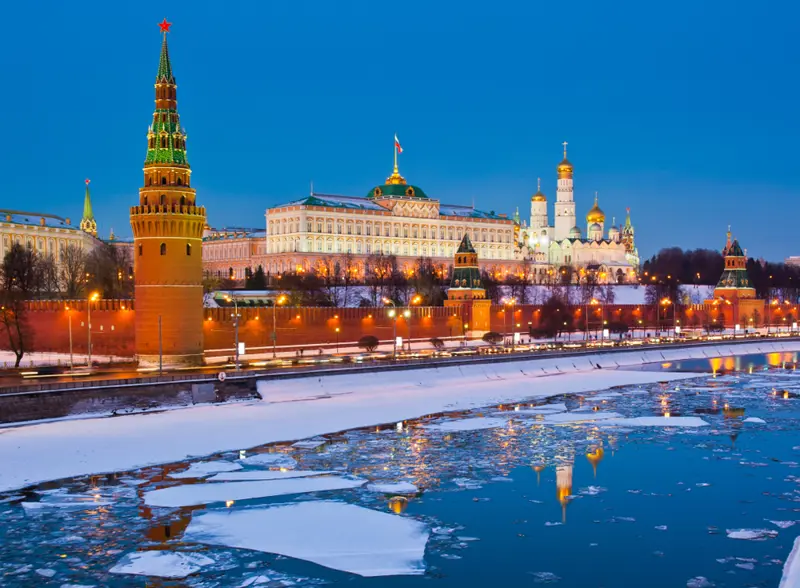
KERMLIN
The Moscow Kremlin is a symbol of the Russian State, one of the greatest architectural complexes in the world. The most ancient city center have a treasure house of magnificent relics and monuments of art. Since 1991, the Kremlin has been the official residence for the President of the Russian Federation. The ensemble has been included in the Unesco Worldwide Heritage.
www.kreml.ru
www.kreml.ru
 RED SQUARE
RED SQUAREThe major and most famous square of the Russian Capital appare in Moscow at the end of the XV century during the reign of Ivan III. The name “Red” was assigned to the square with a special decree of 1688. Destroyed in 1812 by the Napoleon troops, the square was restored. Nowadays is the real heart of the city; state celebrations, folk festivals and concerts are held here.
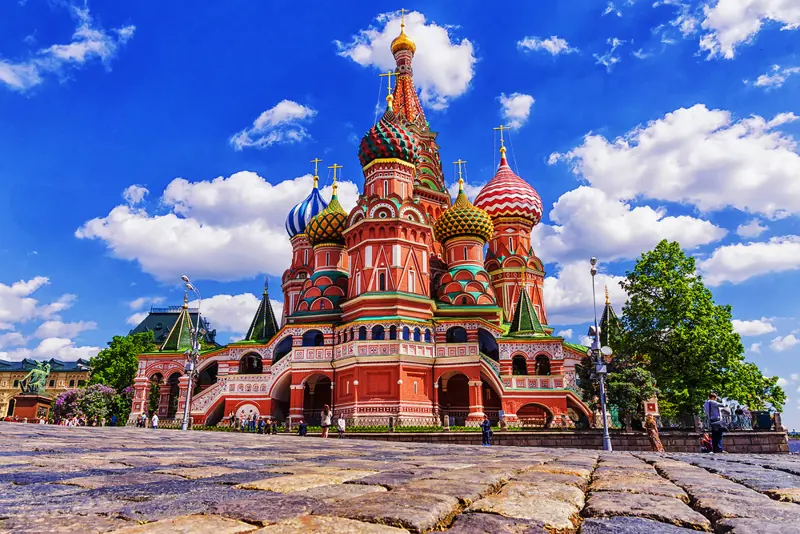
SAINT BASIL'S CATHEDRAL
The Red Square
Saint Basil’s Cathedral on the Red Square is rightfully considered the most beautiful cathedral in the city, the heart of Moscow and a “visiting card” of the capital. The cathedral was erected in 1552-1554, after several reconstructions, in 1923 a part of the cathedral was transformed to a museum, and it was closed in 1929.

CATHEDRAL OF THE THEOTOKOS ANNUNCIATION
The Kremlin, the Sobornaya Square
The Cathedral is located in the heart of the capital and was erected in 1484-1489 by the team of Pskov. The cathedral is situated at the south-western corner of Cathedral Square. The cathedral is covered by nine-domed with gilt copper and is one of the most frequented Moscow museum. Here you can see unique murals of the XVI century and the invaluable iconostasis. Since 1993, regular services have been recommenced in the cathedral.
The Cathedral is located in the heart of the capital and was erected in 1484-1489 by the team of Pskov. The cathedral is situated at the south-western corner of Cathedral Square. The cathedral is covered by nine-domed with gilt copper and is one of the most frequented Moscow museum. Here you can see unique murals of the XVI century and the invaluable iconostasis. Since 1993, regular services have been recommenced in the cathedral.
Museums
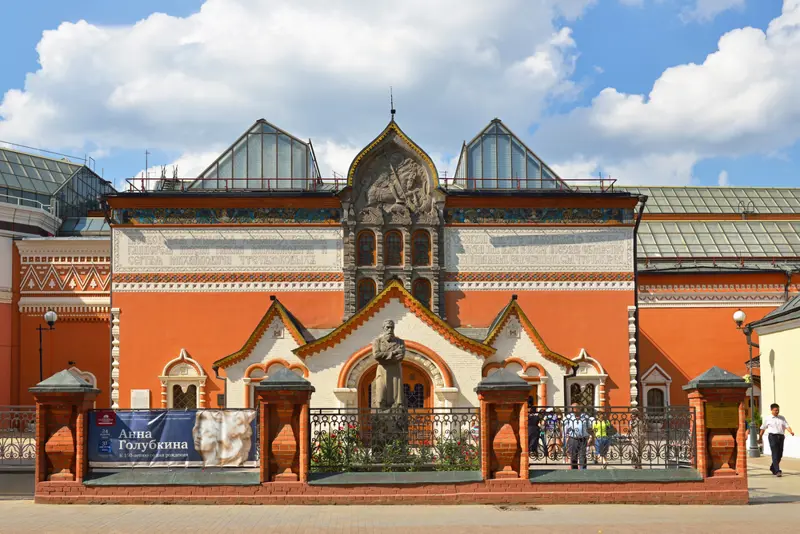
THE STATE TRETYAKOV GALLERY
10, Lavrushinsky Pereulok
The Museum dated from the end of 1851, when family of Tretyakov bought the house. In 1856 Pavel Tretyakov, a russian merchant and maecenas, purchased the first works of painting wich marked the beginning of famous collection. He donated his collection to the city of Moscow in 1892 and has since become a world-famous museum. The State Tretyakov Gallery possesses a unique collection of Russian art which includes masterpieces created for more than a thousand years.
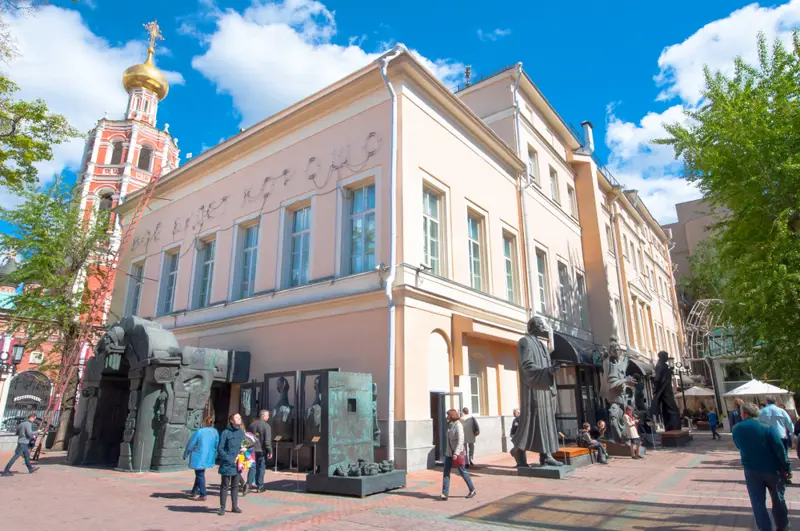
MOSCOW MUSEUM OF MODERN ART
25, Petrovka Str.
Is the first state museum in Russia that concentrates its activities exclusively on the art of the 20th and 21st centuries. The Museum was unveiled on December 15, 1999. His important collection have works by important 20th century masters; later were enriched considerably, and now is one of the largest collections of modern and contemporary russian art, which continues to grow through acquisitions and donations.
www.mmoma.ru
Is the first state museum in Russia that concentrates its activities exclusively on the art of the 20th and 21st centuries. The Museum was unveiled on December 15, 1999. His important collection have works by important 20th century masters; later were enriched considerably, and now is one of the largest collections of modern and contemporary russian art, which continues to grow through acquisitions and donations.
www.mmoma.ru

GARAGE MUSEUM
9/32 Krymsky Val
Garage Museum of Contemporary Art, founded in 2008 by Dasha Zhukova and Roman Abramovich, promote the contemporary art and culture. As well as exhibitions by some of the most influential Russian and international artists working today (including Marina Abramović, Raymond Pettibon, Viktor Pivovarov, and Yayoi Kusama), Garage offers visitors a broad-ranging education program for children and adults, film, concerts and events.
www.garagemca.org
Garage Museum of Contemporary Art, founded in 2008 by Dasha Zhukova and Roman Abramovich, promote the contemporary art and culture. As well as exhibitions by some of the most influential Russian and international artists working today (including Marina Abramović, Raymond Pettibon, Viktor Pivovarov, and Yayoi Kusama), Garage offers visitors a broad-ranging education program for children and adults, film, concerts and events.
www.garagemca.org
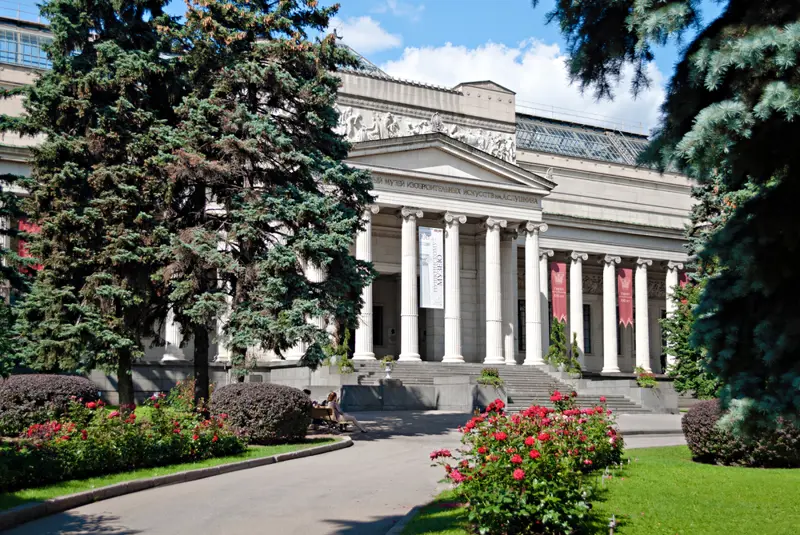
PUSHKIN MUSEUM
The Pushkin State Museum of Fine Arts is a museum complex that exhibits the largest world art collections in Russia. Around 700,000 art works from different ages are present in the Pushkin museum's collection ranging from Ancient Egypt and Greece up until the beginning of XXI century. The French art of XIX-XX century French in the museum is one of the most renowned in the world.
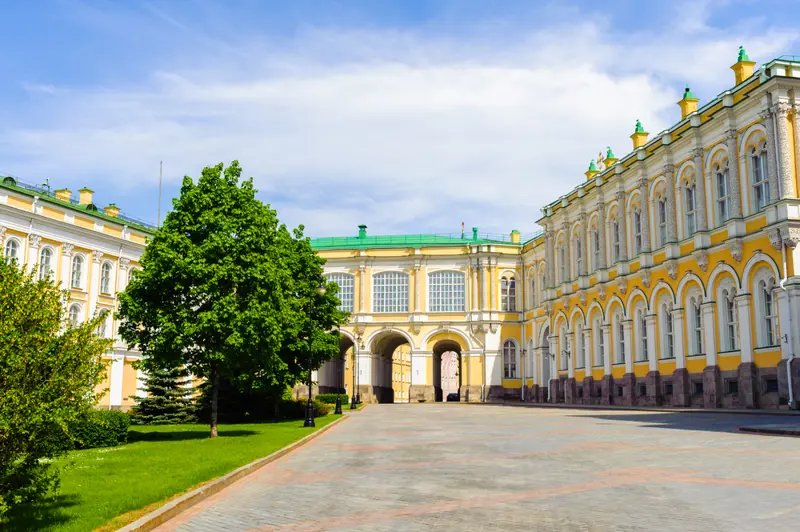
KREMLIN - ARMOURY CHAMBER
The Armoury Chamber in the Moscow Kremlin, housed in the former royal armory of the Grand Kremlin Palace, was established in 1851, making it one of the oldest museums in Moscow. It has a collection of over 4,000 items of Russian and European applied art from the 4th to the 20th centuries: crowns and thrones of Russian tsars, antiques, armor, royal coaches, gold and silver artworks and the famous "Cap of Monomach," used to crown the tsars of Russia up until the beginning of the 18th century.
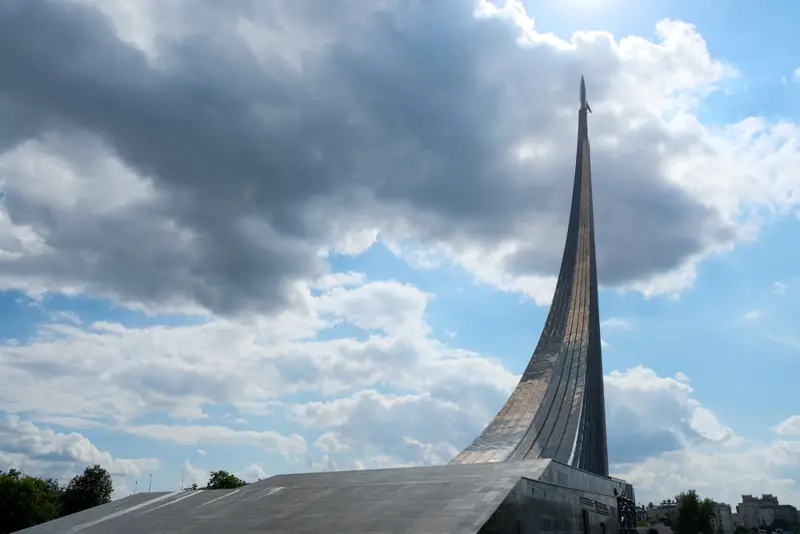
MUSEUM OF COSMONAUTICS
The Memorial Museum of Cosmonautics is situated beneath the monument dedicated "To the Conquerors of Space" - a 100m high titanium sculpture shaped as a rocket taking off.
The interior is covered with constellations, star clusters and distant universes, while the museum exhibits the Russian and Soviet achievements in space exploration, from the launch of the first artificial satellite and the first manned space flight, to the first moonwalk.
Museum of Cosmonautics Tour
The interior is covered with constellations, star clusters and distant universes, while the museum exhibits the Russian and Soviet achievements in space exploration, from the launch of the first artificial satellite and the first manned space flight, to the first moonwalk.
Museum of Cosmonautics Tour
Excursions

ALL-RUSSIA EXHIBITION CENTRE (VVC)
Prospekt Mira, 119
VDNH is the biggest exhibition and fair complex of the Russian Federation with a total area of 2375 thousand sq. meters. More than 2 thousand architects, artists, folk craftsmen took part in the construction of the exhibition complex under the guidance of the main architect S. E. Chernyshov. The territory of the exhibition center remains one of the favorite places of resort for muscovites and guests of the city, a rest zone with entertainment activities that are organized annually.
www.vvcentre.ru
VDNH is the biggest exhibition and fair complex of the Russian Federation with a total area of 2375 thousand sq. meters. More than 2 thousand architects, artists, folk craftsmen took part in the construction of the exhibition complex under the guidance of the main architect S. E. Chernyshov. The territory of the exhibition center remains one of the favorite places of resort for muscovites and guests of the city, a rest zone with entertainment activities that are organized annually.
www.vvcentre.ru
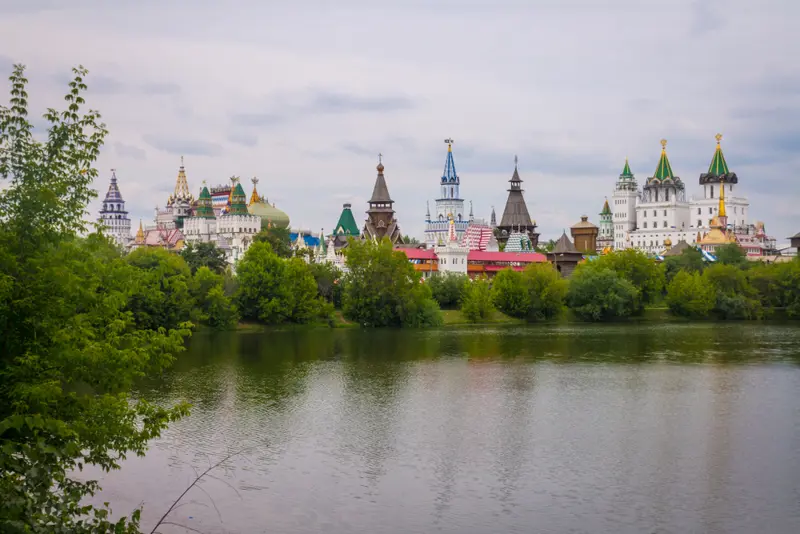
IZMAILOVSKY PARK
17 Narodny Prospekt
Its in the east of the city and is split into two parts. Back in the 16th century there was a village, in 1930 the restoration began and the park immediately became a place for relaxation and entertainment available to everyone. The park continued to expanded and in 1957 was launched the biggest ferries wheeel. Izmailovsky park is today unique and is main attraction is the forests, the fauna and flora. Is also cultural centre, home to many festivals, exhibitions, theatrical performances, children’s pageants, musical evenings and concerts.
www.izmailovsky-park.ru
Its in the east of the city and is split into two parts. Back in the 16th century there was a village, in 1930 the restoration began and the park immediately became a place for relaxation and entertainment available to everyone. The park continued to expanded and in 1957 was launched the biggest ferries wheeel. Izmailovsky park is today unique and is main attraction is the forests, the fauna and flora. Is also cultural centre, home to many festivals, exhibitions, theatrical performances, children’s pageants, musical evenings and concerts.
www.izmailovsky-park.ru
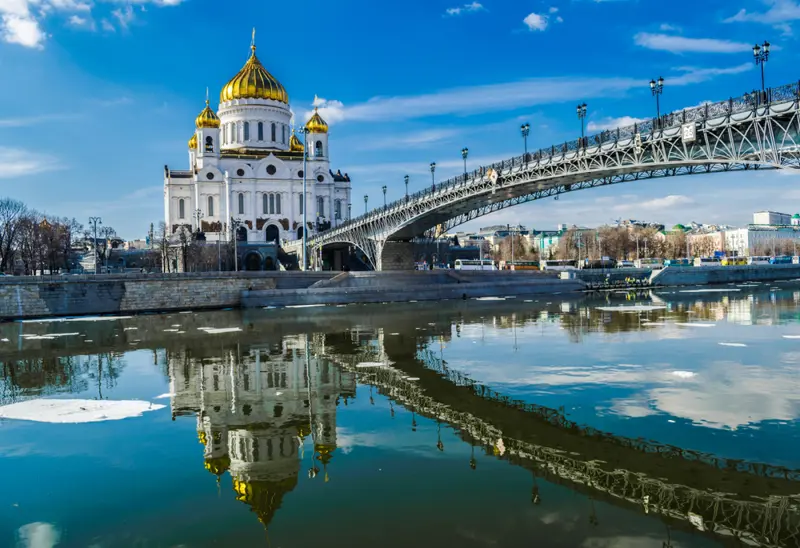
MOSCOW RIVER
On the river, that runs more than 100 kilometers along the city banks is possible to do an exciting trip that routes by picturesque city district and offers a remarkable view of the most grand architectural ensembles of Moscow. Trips on the Moscow river are available not only in summer, but also in winter, and even at night.
Published on Avion Tourism N68. Update: September 2018.
News & Useful info
You might be interested in
Destinations found in the vicinity
Airports nearby Moscow





